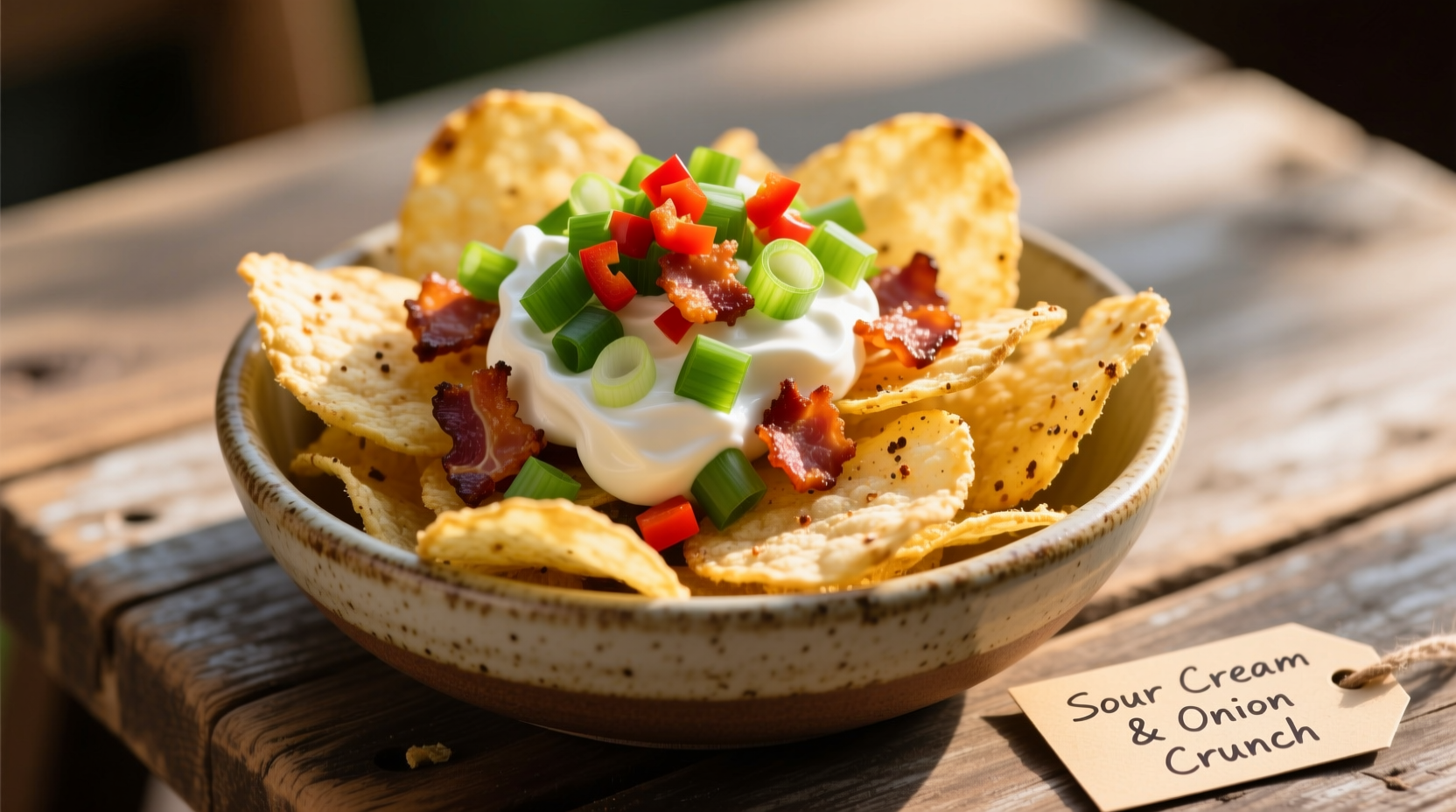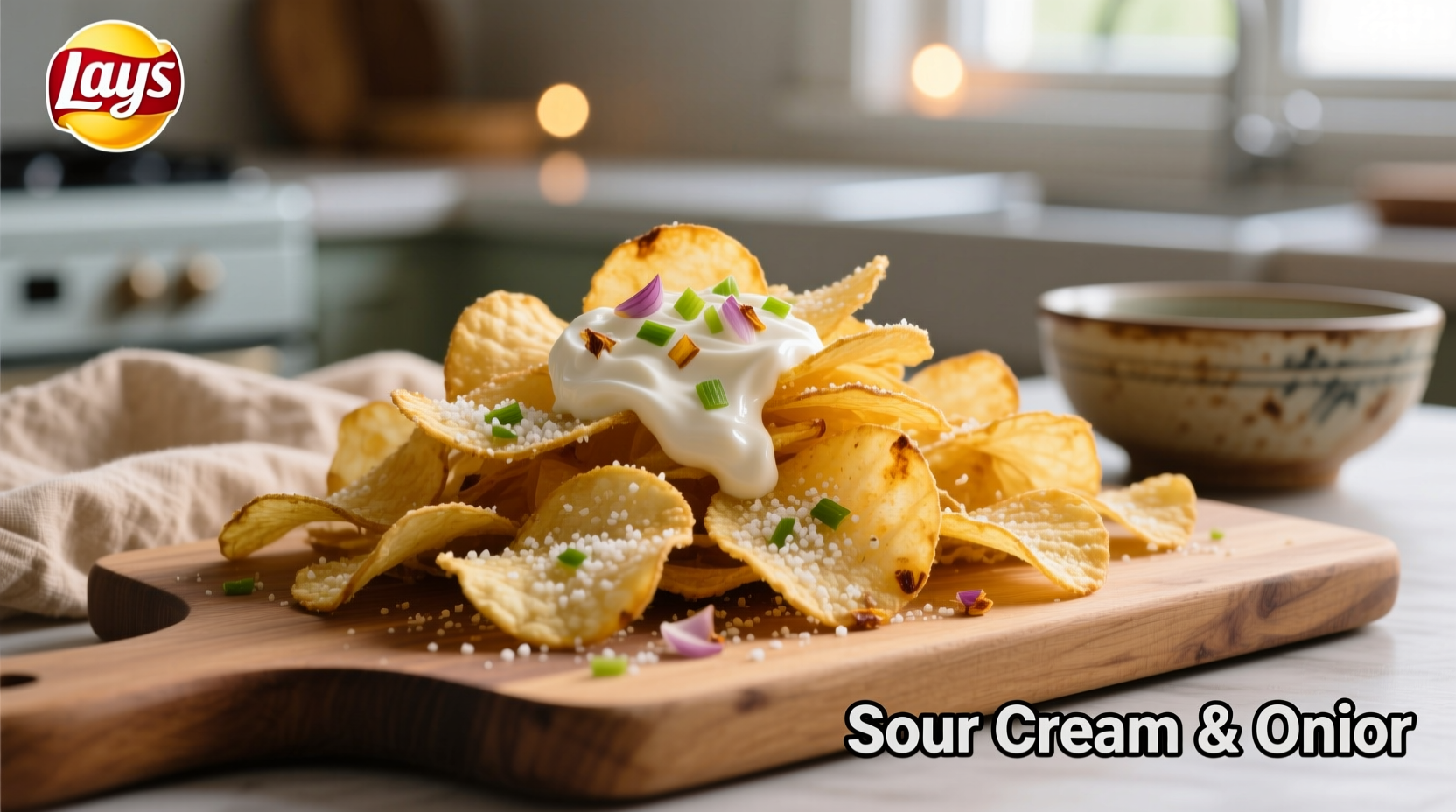Sour Cream and Onion Baked Lay's are a lower-fat alternative to traditional fried potato chips, offering the same popular flavor profile with approximately 50% less fat. Unlike regular Lay's, these chips are baked rather than fried, resulting in a lighter texture while maintaining the signature sour cream and onion taste that has made this flavor one of America's favorites.
What Makes Baked Lay's Different From Regular Chips
Understanding the fundamental difference between Baked Lay's and their fried counterparts starts with the cooking process. While traditional Lay's potato chips are deep-fried in oil, Baked Lay's undergo a dry baking process that significantly reduces fat content without eliminating flavor. This method aligns with evolving consumer preferences for lighter snack options that don't compromise on taste satisfaction.
Taste Profile Analysis: Flavor Without the Fat
The distinctive sour cream and onion flavor in Baked Lay's comes from a carefully balanced seasoning blend that delivers the familiar tangy, creamy notes consumers expect. Food science research shows that the baking process affects how flavor compounds adhere to the chip surface, which is why Baked Lay's uses slightly different seasoning ratios than their fried versions to achieve comparable taste intensity.
| Nutrient | Baked Lay's (1oz) | Regular Lay's (1oz) |
|---|---|---|
| Calories | 120 | 160 |
| Total Fat | 4.5g | 10g |
| Saturated Fat | 1g | 1g |
| Sodium | 190mg | 170mg |
Nutritional comparison based on Frito-Lay's official product information (Frito-Lay.com nutrition facts)
Ingredient Breakdown: What's Really Inside
Baked Lay's Sour Cream and Onion contains these primary ingredients: Potatoes, Canola Oil, Corn Oil, Sunflower Oil, Salt, Maltodextrin, Whey, Buttermilk, Onion Powder, Garlic Powder, Natural Flavor, Sour Cream (cultured Cream and Milk), Spices, Dextrose, Citric Acid, Annatto Extract Color.
Compared to regular Lay's Sour Cream and Onion which uses: Potatoes, Vegetable Oil (Sunflower, Safflower, and/or Canola Oil), Salt, Sour Cream (Cultured Cream and Skim Milk), Onion Powder, Garlic Powder, Buttermilk, Natural Flavor, Spices, Dextrose, Citric Acid, Annatto Extract Color.
The key difference lies in the oil content - Baked Lay's uses minimal oil for the seasoning blend rather than for frying, resulting in the significant fat reduction. The baking process also creates a slightly different texture profile - lighter and more delicate than traditional fried chips.

Practical Uses Beyond Snacking
Professional chefs often utilize Baked Lay's creative applications that leverage their lighter texture and flavor profile:
- Crumbled as a salad topping for added crunch without excess oil
- Used as a coating for baked chicken or fish instead of breadcrumbs
- Incorporated into homemade dips for texture contrast
- Crushed and mixed with melted butter as a casserole topping
Contextual Considerations: When Baked Lay's Make Sense
Understanding when Baked Lay's serve as an appropriate snack choice requires considering several factors. For those monitoring fat intake, the 55% reduction in total fat compared to regular Lay's represents a meaningful difference. However, the sodium content remains similar, making them less suitable for those specifically watching sodium levels.
From a texture perspective, Baked Lay's provide a lighter crunch that some consumers prefer with certain beverages or as part of a balanced snack plate. The baking process creates a more delicate chip that may not hold up as well with thicker dips compared to their fried counterparts.
Consumer Perception and Market Evolution
According to market research from the Snack Food Association, baked snacks have maintained steady popularity since their introduction in the 1990s, with approximately 38% of consumers indicating they choose baked options at least occasionally for perceived health benefits. However, taste remains the primary driver for most snack purchases, which explains why both baked and fried versions continue to coexist in the marketplace.











 浙公网安备
33010002000092号
浙公网安备
33010002000092号 浙B2-20120091-4
浙B2-20120091-4